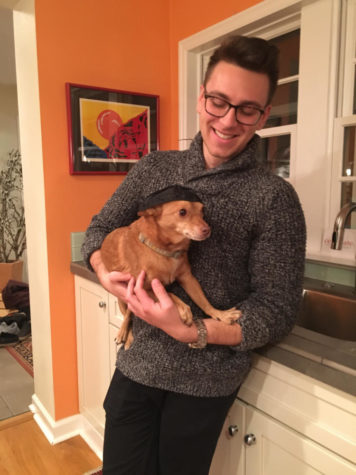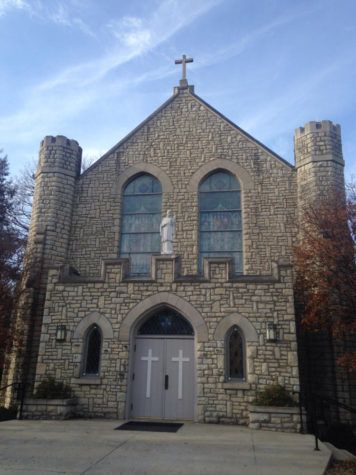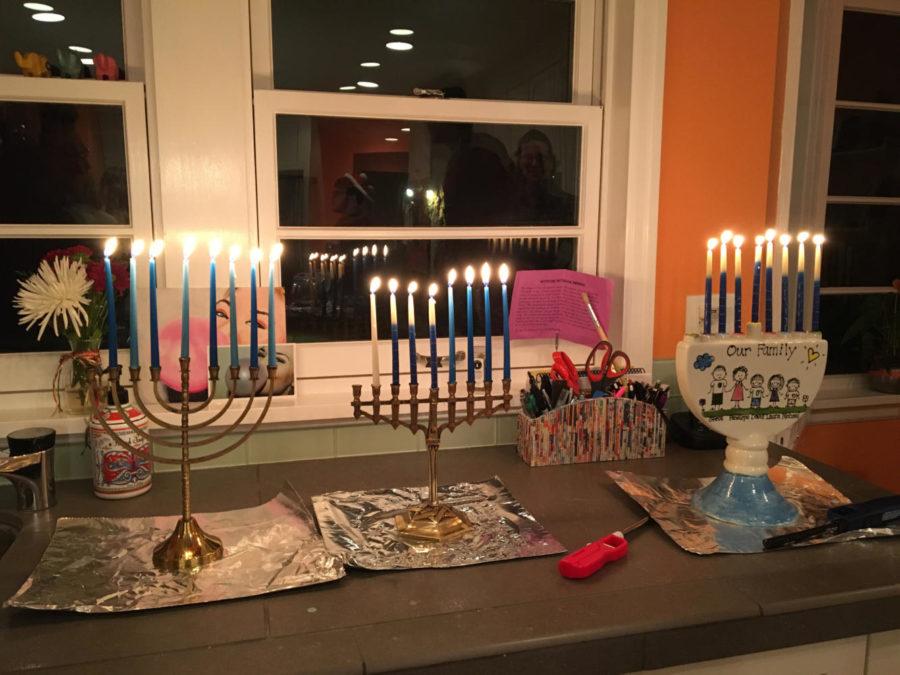It’s a strange feeling to realize that each person passing you on the street has a complex life all their own — but hardly an exclusive one. It’s so common, in fact, that in 2012 writer John Koenig coined a new word, “sonder,” to describe it.
As throngs of students return to the sidewalks on campus, many might wonder how the people streaming by experienced winter break distinctly and differently. For us on Opinions desk, we experienced the same feeling at our last meeting of the semester back in December. We were all looking ahead to the time off from school and work, yet all for different reasons.
With academic life returning in full swing, most of us are returning to the shared, routine existence of college students. Before we move on, however, here are six glimpses into the various lives of college students on break.
Ana Altchek, Columnist
Driving is one of my favorite parts of being home. Even on a small trip across town, I am reassured by the familiarity and warmth of the different cultural symbols that separate my town from others.
Six churches, two synagogues and one mosque populate Lawrenceville, New Jersey. All are representative of the different backgrounds that give my hometown its nickname — “the mini melting pot.” Passing by each one in less than a 10-minute drive is a reminder of the acceptance and tolerance of my home.
In every winter chorus concert I performed in elementary school, I’d have to learn a song representing each holiday. Even though Christmas was the main holiday being celebrated, parents of every religion came in to teach a segment on the holiday they celebrated so that each student would feel proud to celebrate their religion’s winter holiday.
This is my town in a nutshell — a place that embraces the differences among one another and uses it a uniting factor. A microcosm of what this country was originally built upon.
Brian Gentry, Columnist

Portland, Oregon. It’s the hipster capital of the country, home to dozens of microbreweries and independent bookstores. It’s the setting of the hit TV show, “Portlandia.” And coincidentally, it’s the least religious city in the country, according to a 2015 study by the Public Religion Research Institute. Accordingly, the holiday season is markedly unreligious.
Returning home to the city after finals week, I came face to face with this unorthodox attitude, celebrating “Christmukkah” — a portmanteau of the Christian and Jewish holidays — with my best friend and his family. On the seventh night of “Christmukkah,” we dimmed the Christmas music and donned our yarmulkes. Almost everyone, including the dog, was stuck with traditional black yarmulkes. My friend’s brother sported a version that looked more like Santa’s hat.
It was time to light the candles. My friend stopped, confused.
“Do you light the candles from left to right or right to left?” he asked.
You can’t blame him for not knowing. After all, he’d only done it eight days each year for all 20 years of his life.
My friend’s dad then recited the Hanukkah prayers. “Baruch atah, Adonai Eloheinu…” he began, only to realize most people there didn’t know the words. So we did the rest in call-and-response style, pausing every two words to allow people to catch up.
We let the candles burn out as we enjoyed matzah ball soup, latkes and gluten-free kugel in the next room over. We laughed and talked, thankful for each other’s presence. The combined holiday was not so much about expressing devotion to God — it was about appreciating friends and family.
Neena Hagen, Columnist
Certain expectations come with being raised as the product of an Indian mother from a Hindu household and a Caucasian father from a Christian one — a healthy amount of influence on both sides, an unspoken contest to gain a religious monopoly on my siblings and me.
My parents’ methods were never overt — nobody plastered our homes with Hindu imagery or forced us to memorize Bible verses. Instead, they moved subtly, nudging us bit by bit, one holiday tradition at a time. A visit to my Hindu family’s home in Mississippi became synonymous with prayers to the household shrine of the three main Hindu gods and the presence of small elephant figurines everywhere.
Christmas with my dad’s family meant being reluctantly dragged to church, where I would fail to keep myself from nodding off and earn disapproving scowls from my more devout relatives. Over the years, they reluctantly accepted that my siblings and I would be better left at home.
Despite my family’s hopes, their efforts ultimately backfired. Being brought up in the diverse city of Philadelphia, I discovered the value of reconciling cultural differences early on. The tension between the two sides of my family only served to distance me from both, and caused me to dread the inevitable contentiousness of the holiday season. When I finally realized religion itself was creating the rift, I concluded the only way to mend it was to celebrate Christmas as a secular holiday. And my family has celebrated Christmas as a secular holiday for a long time now, complete with the Christmas tree, wintery decorations and family spirit — a simple get-together with my dad’s family in Erie. It’s a compromise of sorts that is much more in keeping with deflecting social conflict.
As for the “true meaning of Christmas,” I think my relatives and I, regardless of how religious, all agree that a warm night of singing off-key carols and exchanging laughter with family beats a dry sermon and a plastic nativity scene any day.
Maggie Koontz, Senior Columnist

As a young Catholic living in a small town outside of Louisville, Kentucky, I always looked forward to the Christmas season, particularly midnight Mass. When we were old enough, my parents would bundle my brothers and me in layers of clothes, load us into the car and drive us to church for the service.
I was excited to be able to stay up past my bedtime, but I found it difficult to stay awake. The church was packed with people, creating a warm environment that made me sleepy. Accustomed to the routine of standing, sitting and kneeling, my eyes would wander as I mumbled the words to various prayers and hymns. A giant Advent wreath hung above the altar with three purple candles and one pink candle, but my favorite decoration was the wooden nativity set in the corner.
Before the service began, I would excuse myself to go kneel in front of the nativity scene while my parents and grandmother made conversation with the families around them. Every year, I prayed for God to keep my family safe, for one more year of happiness. After the service concluded, my family would shuffle to the car and head home. Yawning, I would tumble into bed, eager to see what Santa Claus would bring me in the morning and comforted by the idea that God would watch over my family for another year.
Mariam Shalaby, Senior Columnist
When I was a little girl, my fellow Muslim neighbors had a Christmas tree — I was sure of it. It was an evergreen, decked out in sparkling ornaments, covered in strings of tinsel, and had piles of presents loaded beneath it. But they called it a “New Year’s Tree,” and the presents were exchanged on New Year’s Eve. As a kid, I thought having the tree was a total betrayal of our identity. But in retrospect, I realize that it was their immigrant parents’ well-intentioned attempt to prevent their kids from feeling isolated in an overwhelmingly Christmas-centric culture.
My mom, who grew up Catholic, consoled me by saying she never had a Christmas tree anyway, growing up in the Philippines, where palm trees line the streets.
I love our Islamic holidays — Eid-al-Fitr and Eid-al-Adha — which, this year, fell in the summer. My family spent them sprawled on picnic blankets at the park and posing for pictures in the sunshine. As Muslims, my family and I revere Jesus as a prophet, but since Christmas isn’t our holiday, we’ve never celebrated it. Instead, we’ve spent Christmases at the movies or just like any other day.
At our house this year on Christmas Day, my family gathered in the kitchen to choose a paint color, passionately voting for dark gray, light gray or white walls. Then, we went to Salem’s Market and Grille in the Strip District. The Middle Eastern butcher, grocer and restaurant was open until 6 p.m. on Christmas Day. The restaurant was packed with other Muslims happily chatting over family dinners. We certainly didn’t have Christmas roast pig, but we did have spicy chai, good kebabs and loved ones. Without meaning to, we created a holiday-like atmosphere. “It’s kind of like we’re having Christmas dinner,” my sister-in-law said. “It usually gets lonely around Christmastime.”
While it didn’t beat Eid as “the most wonderful time of the year” this year, we did get time off from work to gather together. And that is something I’m thankful for.
Sarah Shearer, Assistant Opinions Editor
The smell of spaghetti pizza wafting from its box on my lap on the way home from church in Lancaster is perhaps the strongest, most Christmas-defining element of the holiday.
The Christmas Eve service at my home church, Lancaster Church of the Brethren, lets out around 6 p.m., which was the perfect time to stop at Rosa Rosa Pizzeria on the way home. We got in the door just before the restaurant closed for the night and were almost always the only customers inside. We’d get out the door 20 minutes later with bags and boxes in hand, ready to get home and feast. Part of me had always felt insecure about eating fast food on a sacred holiday, but my best friend’s family has subs and punch after re-enacting the nativity story, so I guess it’s all right.
Christmas Eve was actually the only day of the year we ever had food from Rosa Rosa. Even though I remember thinking the food was fantastic, according to my mother, “It was the only place open on Christmas Eve.” Perhaps it was the combination of hot cheese and the knowledge that Santa Claus would be descending onto our roof in a few short hours that did me in.
My parents ate cheesesteaks and fries across the table from me, watching as I devoured my slice in my Christmas Eve night gown. One year — I think it was fourth grade — I went big and ordered a piece with actual spaghetti on top. It’s true what they say about kids being fearless.
After the pizza was gone, I’d go to the pantry and mix raw oats with Christmas sprinkles and throw them ― along with some baby carrots — all over the porch. Reindeer get hungry flying around the entire world in one night, too, obviously.
That pizzeria tradition carried on year after year. I was especially looking forward to having my annual piece of Rosa Rosa pizza during my first year at Pitt – a firm anchor in the midst of my radically changed life.
Unfortunately for me, the pizzeria burned to the ground just one month prior to Christmas Eve. Now, we’re forced to visit another pizzeria — and although the bread is perfectly textured and crispy in its own way, there is and forever will be a Rosa Rosa pizza-shaped hole in my heart.


